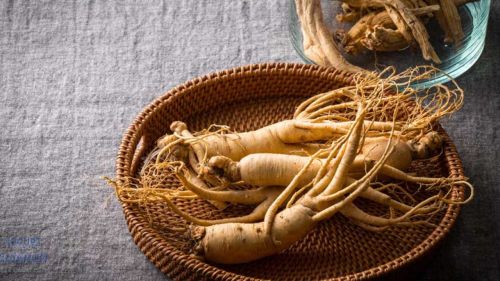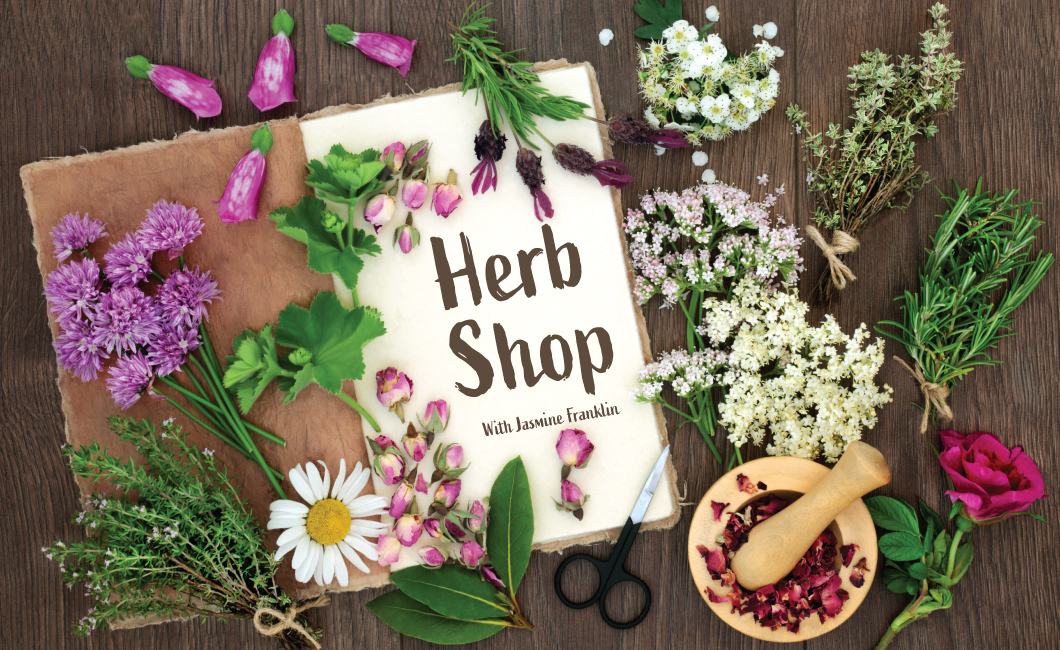- Resistance to disease
- Immune System Stimulant
- Reduces High Cholesterol
- Reduces risk of heart attack, and clots
- Protects Liver health
- Radiation Therapy (minimizes cell damage)
- Reduces loss of appetite
- May be used as a mild sex stimulant
- headaches
- sleep problems
- digestive problems
- changes to blood pressure and blood sugar
- irritability
- blurred vision
- a severe skin reaction
- diarrhea
- dizziness
- a dry mouth
- a decreased heart rate
- convulsions and seizures
- Some women may also experience swollen breasts and vaginal bleeding.
- 7 g (1/2 tbsp) jojoba oil (infused or plain)
- 7 g (1/2 tbsp) shea (or mango or avocado) butter
- 12 g (1 tbsp) rosehip seed oil
- 9 g (4 tsp) vegetable emulsifying wax
- 75 g (5 tbsp) distilled water
- tiny pinch of alkanet root (optional, for pink color)
- 1/2 tsp (1 g) ginseng extract
- few drops essential oil (see step 3)
- nature-derived preservative (see step 4)
- Combine the jojoba oil, shea butter and emulsifying wax in a heat proof container or small canning jar. Don’t add the rosehip seed oil yet, since it’s a bit more delicate. If you want your lotion lightly tinted pink, add a tiny pinch of alkanet root too. Weigh the water in a separate jar.
- Set both jars down into a saucepan containing an inch or two of water that has been placed over a medium-low burner. Heat the jars and their contents via this indirect heat for around 10 minutes. Turn off the burner, but keep the pan on it. Add the rosehip seed oil to the oil/butter & wax mixture and let it continue sitting in the still-warm pan for about a minute to warm up.
- Pour the melted oil/butter/wax mixture into the hot distilled water. Some of the alkanet root will have settled to the bottom of the container while heating, so pour carefully and leave that layer behind, to avoid speckles in your finished cream. The combination should immediately turn light pink as the two mixtures meet and the emulsification process begins. Stir briskly for around 30 seconds, then set aside to cool for 4 or 5 minutes, stirring occasionally for 30 or 40 seconds at a time. If you’d like to speed up the thickening process, you can set the jar of cream down into a bowl of ice water while you stir. Keep stirring occasionally as the cream cools. It may take several hours for it to fully set up. Add any essential oils that you’d like for scent once the cream has cooled a bit. In this recipe, I like to add a few drops each of Rose Absolute and Geranium essential oils, plus 1 drop of Lavender, for a pretty rosy floral scent. You’ll also want to add the Ginseng Extract before the lotion cools completely.
- *If adding a preservative, do so while the cream is cooling down. Recommended temperatures vary, depending on type. (Look on LotionCrafter’s site for a wide variety of preservative options to choose from.) I’m currently a fan of Leucidal Liquid SF, a probiotic-based preservative created by the fermentation of Lactobacillus, which is added once lotion temperature drops below 104°F (40°C). Leucidal Liquid SF is used at a rate of 2 to 4%. That means for every 100 grams of ingredients in your recipe, you’d use 2 to 4 grams of Leucidal Liquid SF. This recipe weighs 110g so I use 5 grams of preservative. I’m still feeling out the shelf life of nature-derived preservatives, but lotion and creams I’ve made with Leucidal Liquid SF are still in excellent condition with no signs of spoilage (visible or via microbial test kits) after 4+ months. If you don’t wish to use any type of preservative, keep your face cream in the refrigerator and use it up within one week.
- 8 cups (2 liters) boiling water
- 10 packets (3 grams/0.1 ounce each) Korean red ginseng tea
- 4 large cloves garlic
- 3 jujube dates or 15 goji berries
- 3 pieces dried Korean red ginseng, optional
- 2 cooked chestnuts, peeled, optional
- 1 cup (200 grams) uncooked sweet rice
- 2 baby chickens (poussin) or Cornish hens, about 2 pounds each, rinsed with cold water
- 2 pinches dried chile threads, for garnish
- Handful fresh pea shoots, for garnish
- 1 teaspoon black sesame seeds, plus more if needed
- 1 tablespoon toasted sesame oil
- Sea salt or kosher salt
- Freshly ground black pepper
- Brew the ginseng tea by mixing together the boiling water and red ginseng packets until dissolved. Set aside.
- Place 2 garlic cloves, 1 date, 1 piece of ginseng if using, 1 chestnut if using and 2 tablespoons of rice into the cavity of each bird. Skewer each closed with a toothpick. Place the remaining rice in a double-layer piece of muslin or cheesecloth with the remaining ginseng and date. Tie the cloth closed tightly but leave a little bit of extra space for the rice to expand. Place the chickens and rice bag into a large, wide heavy-bottomed pot. Cover with the tea, and top off with water to cover, if necessary. Bring to a boil over high heat. Reduce the heat and simmer, occasionally skimming away any fat that comes to the surface, until cooked through, about 2 hours. When done the chickens should be very soft and fall apart easily when tugged at.
- Carefully transfer the chickens to 2 bowls and divide the broth between them. Top the chickens with chile threads and garnish with pea shoots and a sprinkle of black sesame seeds. Drizzle with the sesame oil. Unwrap the rice package in a separate bowl and sprinkle with black sesame seeds, if you like. Serve with salt and pepper on the side.
Written by Jasmine Franklin on August 21, 2019.
Plants have always been a part of my life. My parents believed in the holistic elements to certain plants and was always quick to look there first. They always worked hard to create something to pass on to us, which is why I decided to start the Herb Shop! I want to share where I'm from, where a lot of our medicinal fixes originated from, as well as, shine a light on the multifaceted uses of common plant life that we look past every day.

Panax ginseng (Chinese/Korean/Japanese)
or Panax quinquefolius (American)
I.e. Ginseng
American ginseng is a persistent herb native to the thriving forests of the eastern United States. While Asian ginseng has been harvested in abundance from Northern Manchuria and has been harvested there for thousands of years. The genus name, Panax, is derived from the Greek "panakeia," which means universal remedy. The term "ginseng" is derived from the Chinese term "jen-shen," which means "in the image of a man." Ginseng roots shaped like the human body are considered highly desirable. Ginseng has been prized for centuries for its purposeful curative properties.
Health Benefits
Ginseng has been lifted up for its different traits – “a mild aphrodisiac, that enhances memory, learning, productivity, physical stamina, and immune function, while reducing blood cholesterol and sugar and minimizing the ravages or stress, aging, radiation, alcohol, and narcotics.” (Page 283-292).
Here is a brief list of some health benefits observed with the use of ginseng:
WARNING:
Not all side effects are known, but there were a few that have been observed. The following side effects have been reported in cases of cons:
Other Uses
“Ginseng — also known as the ‘root of immortality — is a sweet, tonic herb that has been used in traditional Chinese medicine for centuries to treat various disorders. It is believed to both stimulate and relax the nervous system and improve stamina,” notes Barbara Close, an esthetician who specializes in therapeutic herbalism. Ginseng is usually consumed orally via tea, paste, or cooked in foods. Believe it or not, it has taken over 2,000 years to formulate ginseng into a topical crème for usage. In addition to firming and reducing lines, ginseng helps de-puff the area around your eyes and can help minimize dark circles. See the recipe for Rosehip & Ginseng Face Cream below:
Ingredients Needed:
Yields: Fills three 0.85 oz. (25 ml) amber glass jars.
Steps:
Finishing Up
Spoon the cream into glass jars and you’re done! Apply as needed, to your face and throat. Store in a cool location out of heat and sunlight. (Don’t store homemade lotions and creams in a bathroom, since the fluctuating temperatures and humidity will shorten shelf life.)
Recipe of the Day
Ginseng has been used in dishes and as parts of recipes for many, many years. With the root having a slight bitter taste that is noticeable but not over powering, it is a popular herb when the consumer needs a bit of pepping up. The recipe for this month is Chicken Ginseng Soup:
Ingredients Needed (serves 2):
Steps:
Sources:
Castleman, Michael. The Healing Herbs: The Ultimate Guide to the Curative Power of Nature’s Medicine’s. Bantam: New York, 1995. Print.
https://hort.purdue.edu/newcrop/afcm/ginseng.html
https://theklog.co/ginseng-skin-benefits/
https://www.cookingchanneltv.com/recipes/judy-joo/magical-chicken-ginseng-soup-2383003



